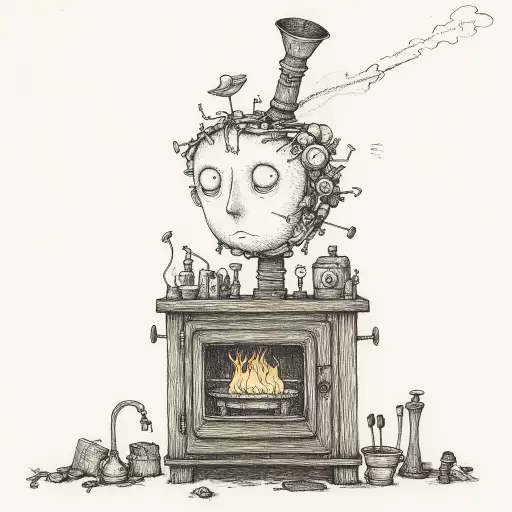Explore the Best AI Image Gallery

Beyond the Canvas: How IoT in Smart Homes is Transforming the Creative Industry
The fusion of technology and creativity has always been a captivating phenomenon. From the first brushstrokes on cave walls to the emergence of digital art, humans have continuously sought innovative ways to express themselves. Today, the Internet of Things (IoT) and its integration into smart homes are revolutionizing the creative landscape, offering artists, designers, and innovators unprecedented tools and possibilities.
Imagine a world where your home becomes an interactive canvas, responding to your emotions and inspirations. This is the potential that IoT unlocks for the creative industry.
Potential Applications in Smart Homes
- Interactive Installations: Artists can leverage sensors embedded within smart home devices to create immersive installations that respond to the presence, movements, or even emotions of viewers.
- Personalized Experiences: Imagine a music composition that adapts to your mood based on data collected from smart lights, thermostats, and even wearable health trackers. IoT enables personalized creative experiences tailored to individual preferences.
- Collaborative Creativity: Smart homes can facilitate real-time collaboration between artists regardless of their physical location. Artists could co-create installations or performances using shared virtual spaces powered by IoT networks.
The Ethical Considerations
While the possibilities are exciting, the rise of IoT in creative applications also raises ethical considerations:
- Data Privacy: Smart homes collect vast amounts of data about users habits and preferences. It is crucial to ensure that this data is used responsibly and ethically, with transparent consent mechanisms and robust privacy protections.
- Algorithmic Bias: AI algorithms often reflect the biases present in the data they are trained on. This can lead to discriminatory outcomes in creative applications, such as biased music recommendations or art generated based on prejudiced stereotypes. It is essential to develop techniques for mitigating algorithmic bias and ensuring fairness.
- Accessibility and Inclusivity: IoT-powered creative tools should be accessible to all individuals, regardless of their abilities or socioeconomic status. Designers need to consider the needs of diverse users and strive for inclusive designs that empower everyone to participate in the creative process.
Future Trends
The convergence of IoT, smart homes, and creativity is still in its early stages, but several trends are shaping its future:
- Personalized Creativity: We will see a rise in tools that enable individuals to personalize their creative experiences. Imagine designing your own home decor based on your mood or generating music compositions that reflect your unique tastes.
- Immersive Experiences: Augmented reality (AR) and virtual reality (VR) will enhance the immersive nature of IoT-powered creative installations, blurring the lines between the physical and digital worlds.
- Collaborative Creativity at Scale: Distributed ledger technologies like blockchain can enable secure and transparent collaboration on creative projects involving multiple artists and stakeholders across geographical boundaries.
As IoT technology continues to evolve, its impact on the creative industry will only grow more profound. By embracing these possibilities while addressing the ethical challenges, we can unlock a future where creativity flourishes in innovative and transformative ways within our connected homes.



](https://images.ai-img.art/thumbnails/150/008b5d5d49667cc2e93a5f8a8adfaa545963da99c39ff0901f5296294636400d.webp)



](https://images.ai-img.art/thumbnails/150/f9584153b4cddd8c9fab611dc10247549b275c59bc173251e37d0935874f9deb.webp)









](https://images.ai-img.art/thumbnails/150/4289d1230b86a96c4d556636c3167bed0ef38f850826549517e4e45db4d87bf7.webp)




](https://images.ai-img.art/thumbnails/150/f67d9af3398150f2ab1bcf250717fea134275e2ca896252b54a4d9bb3719f9ac.webp)










](https://images.ai-img.art/thumbnails/150/c2c9c48b38fae37f0a457b80b084ed01ba803810fc8f488c8f610c03abc74049.webp)






](https://images.ai-img.art/thumbnails/150/bddf3ae4a232290858389b933c866ad3be429ef2e25c23a9f4d7713ed6e44d0b.webp)
